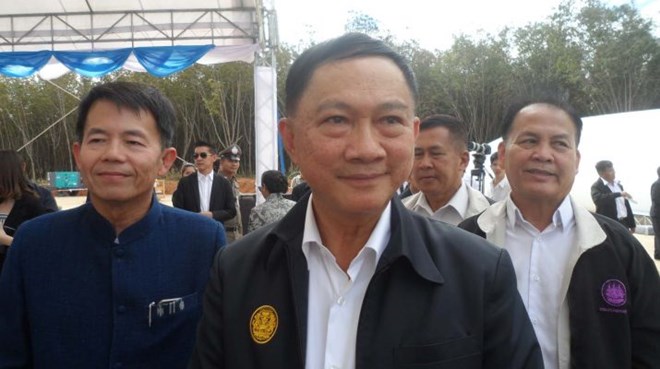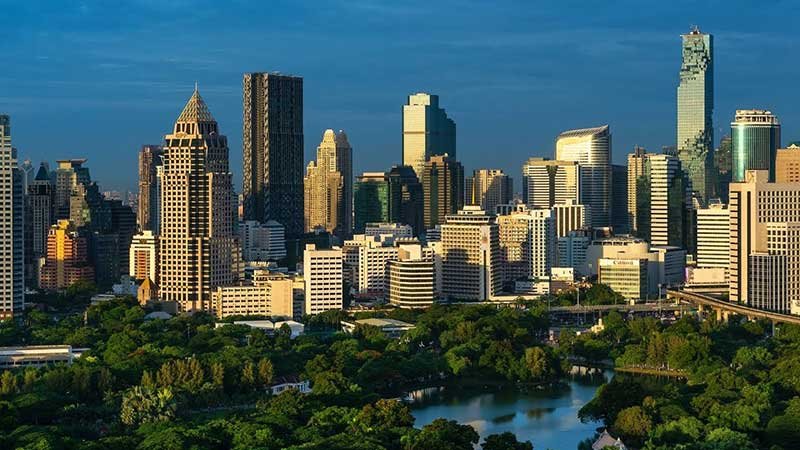Hydropower might help the region but risks loss of biodiversity and a way of life
 The sleepy Lao village of Ban Hat exists today much as it has for decades. Village children dart amongst their families’ fishing boats, laughing as they splash one another with the muddy water of the Mekong River. Life is defined by the ebb and flow of the Mekong, which ushers in fish for families and nutrients for crops and pools in flooding cycles essential for rice production.
The sleepy Lao village of Ban Hat exists today much as it has for decades. Village children dart amongst their families’ fishing boats, laughing as they splash one another with the muddy water of the Mekong River. Life is defined by the ebb and flow of the Mekong, which ushers in fish for families and nutrients for crops and pools in flooding cycles essential for rice production.
This source of subsistence could soon be threatened, however: The Lao People’s Democratic Republic (Laos) recently took steps to begin construction on the first of 12 proposed hydropower dams on the Mekong. While these projects could bring much-needed revenue to Laos and its neighboring Southeast Asian countries, they would irrevocably alter the characteristics of the river, impacting everything from fishes to flooding. And the dams’ most significant costs would be shouldered by those who can least afford it, some experts say — especially poor villagers in small riverside communities like Ban Hat.
Laos’ proposal to build a dam in Sayaburi Province, in the middle stretch of the Mekong, has provoked a lengthy debate. Viraphonh Viravong, director of the Lao Department of Electricity, believes the project will bring many benefits to his country, although he admits a serious risk is posed to fisheries. Researchers’ concerns extend beyond fisheries, however. The dams “will have profound . . . negative consequences for people, agriculture, fisheries, and riverine ecology,” said Smithsonian Tropical Research Institute research associate Tyson Roberts who has studied Mekong fishes for over 40 years. “For reasons I have not quite fathomed, engineers are often ignorant when it comes to ecological impacts of hydrodams,” he said.
As one of the world’s last remaining large rivers free from mainstream dams for most of its 2700-mile length, the Mekong continues to harbor a rich diversity of animal species such as the critically endangered Mekong giant catfish and Irrawaddy dolphin. Although the Mekong ranks as the 10th longest river in the world, its biodiversity of species is trumped only by the Amazon River. With an estimated annual harvest of approximately 2.2 million tons of fish, the Mekong, which flows through China, Burma, Thailand, Laos, Cambodia and Vietnam, also ranks as the world’s largest inland fishery and impacts the livelihoods of the nearly 30 million people who live within 10 miles of its lower stretches.
Dams usually bring economic benefits but often result in environmental and social losses, explained Eric Baran, senior scientist at the international research organization WorldFish Center in Phnom Penh, Cambodia. In the case of the Mekong dams, Baran said the potential losses in fish resources would be “massive,” dramatically impacting both the environment and food security of local people. In addition, he believes the Mekong countries are not fully aware of these consequences and are ill prepared to handle the magnitude of changes that will be brought on by dam development. And Roberts said that the dams will benefit only a select few people, while those depending upon the river “are all going to be the immediate losers, with no benefits.”
Initial assessments suggest that Vietnam could actually face substantial losses if upstream countries like Laos decide to dam the river, said socio-economist John Sawdon of the independent public interest organization the International Center for Environmental Management based in Hanoi, Vietnam. Although economic benefits are attractive for “cash-strapped” governments, he said, profits and energy benefits would be unevenly distributed, both between and within countries and particularly to the poor.
Baran states that there is “absolutely no hope” for the survival of already vanishing long-distance migrant species such as the Mekong giant catfish if dam construction proceeds. Up to 70 percent of fish species in the Mekong migrate long distances to feed and spawn, and dams would both physically block their upstream journey as well as change the environmental signals that trigger migration, Baran explained in a paper published in the environmental journal AMBIO last June.
Fisheries in the Mekong have already been declining over the past decade, according to Philippe Cacot, a fish propagation researcher at the Center for International Research in Agricultural Development in Montpellier, France. This decline — a result of overfishing and environmental degradation — will only get worse if the dams are built, he said.
The river’s flow will also be impacted, said Cacot, which is especially problematic for communities in Vietnam’s Mekong Delta. Altering the Mekong’s flow could have a disastrous effect on agriculture. Any change in sediments and nutrients transported by the river — no matter how small — can change rice yields, Cacot explained. Manipulating the river’s flow could also allow for salt-water intrusion in the Delta, another major threat to agriculture.
Some organizations are working with the Lao government to assess the risks and offer scientific advice. The Mekong River Commission (MRC), created in 1995, researches sustainable development options for its national members — Thailand, Cambodia, Laos, and Vietnam.
“It’s multifaceted,” said MRC communications officer Tiffany Hacker regarding the ultimate decision to build. “You have to look at it holistically.” While there are definitely serious risks, Hacker said, there are also significant potential economic gains. “How you approach the project will determine the extent of the damage.”
An independent Strategic Environmental Assessment (SEA), commissioned by the MRC and published in October 2010, pointed out that one dam across the Lower Mekong mainstream would cause irrevocable change. Even with mitigation measures, according to the SEA report, dam projects would “fundamentally undermine” the Mekong’s resources, represent a “global loss” in biodiversity through extinction of endangered species, and worsen poverty in already poor communities such as Ban Hat. By 2030, if all 12 proposed dams are built, between 550,000 to 880,000 tons of annual fish catch will be lost, said Baran and a team of 25 international scientists involved in SEA. The assessment concludes by calling for a 10-year construction deferral to allow for further study.
Despite this recommendation, Lao Department of Electricity’s Viravong said that consent of the other member countries now stands as the only obstacle to construction. “We believe it has been studied properly,” he stated, adding that Laos will make “good use” of the SEA report but cannot agree to the 10-year deferral plan “for studies and more studies and then more studies.” Viravong believes sustainable dam development can be attained without the deferral, although with “different degrees of certainties.”
According to Hacker, the next six months will determine the future of the river as member country representatives meet to weigh the pros and cons of the dam project, although at this point it’s too early to tell what that decision will be. The MRC provides advice, Hacker said, but the member countries will come to their own final building decision together.
The Smithsonian’s Roberts is skeptical, doubting that the SEA’s recommendations will have an impact if they run contrary to the Lao government’s intentions. Viravong said that Laos is following the MRC’s procedures of prior consultation with the other member countries, but that “we are confident that by April 2011 the other member countries, with the support of the MRC Secretariat, will endorse our proposal . . . to develop the Sayaburi [dam] project.”
Reports of scientific censorship could also threaten the integrity of the project. An anonymous fisheries scientist who worked in Laos for several years reported being pulled aside by a colleague and warned that nothing should be said against the dams, else the scientist’s stay in the country would be threatened. “I’m not in Laos,” the source said, “so I can speak freely now.” But the source fears that future work in Laos could be jeopardized by such a comment. Similarly, Roberts said that scientists working at the MRC — what he calls the “handmaiden of the member countries” — must tailor their views to fit the official line and therefore cannot provide the most honest advice. Hacker denies this claim, however, stating that “the fisheries program [of the MRC] is providing research to the government, not the other way around” and that “the MRC doesn’t have some kind of censor board.”
If damming proceeds, the unmitigated risks described in the SEA assessment would result in “a permanent and irreversible loss of environmental, social, and economic assets.” The true extent of these hidden costs will only be revealed if building proceeds, at which point the damage would have already been done. And while others reap the benefits, communities such as Ban Hat would primarily shoulder this burden.
Source: http://www.scienceline.org/2011/01/the-mekong-river-to-dam-or-not-to-dam/


